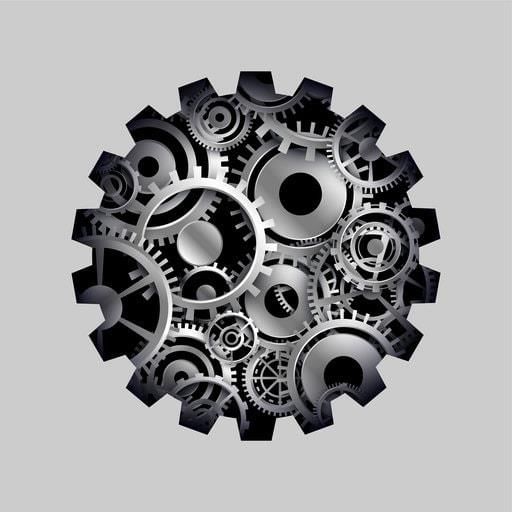Best Study Material for Chemical Engineering Exam
Chemical Engineering Exam > Chemical Engineering Notes > Chemical Technology > PPT - Pulping and Bleaching
PPT - Pulping and Bleaching | Chemical Technology - Chemical Engineering PDF Download
| Download, print and study this document offline |
Please wait while the PDF view is loading
Page 1 Pulping and Bleaching 1 Pulping and Bleaching Page 2 Pulping and Bleaching 1 Pulping and Bleaching Pulping and Bleaching PSE 476: Lecture 4 2 Introduction to Chemical Pulping Agenda Raw material issues Digesters Packing the Digester Presteaming Heating Liquor Impregnation Typical Cooking Schedule Raw material issues Digesters Packing the Digester Presteaming Heating Liquor Impregnation Typical Cooking Schedule Page 3 Pulping and Bleaching 1 Pulping and Bleaching Pulping and Bleaching PSE 476: Lecture 4 2 Introduction to Chemical Pulping Agenda Raw material issues Digesters Packing the Digester Presteaming Heating Liquor Impregnation Typical Cooking Schedule Raw material issues Digesters Packing the Digester Presteaming Heating Liquor Impregnation Typical Cooking Schedule Pulping and Bleaching PSE 476: Lecture 4 3 Chemical Pulping Overview Chip Quality Issues: Wood Species Softwoods (under kraft conditions) » generally produces stronger pulp than hardwoods because of longer fibers - Lower yield than hardwoods because of higher lignin content and more soluble hemicelluloses Hardwoods: » Forms paper with good printing quality » Smaller size produces smooth surface Softwoods (under kraft conditions) » generally produces stronger pulp than hardwoods because of longer fibers - Lower yield than hardwoods because of higher lignin content and more soluble hemicelluloses Hardwoods: » Forms paper with good printing quality » Smaller size produces smooth surface Page 4 Pulping and Bleaching 1 Pulping and Bleaching Pulping and Bleaching PSE 476: Lecture 4 2 Introduction to Chemical Pulping Agenda Raw material issues Digesters Packing the Digester Presteaming Heating Liquor Impregnation Typical Cooking Schedule Raw material issues Digesters Packing the Digester Presteaming Heating Liquor Impregnation Typical Cooking Schedule Pulping and Bleaching PSE 476: Lecture 4 3 Chemical Pulping Overview Chip Quality Issues: Wood Species Softwoods (under kraft conditions) » generally produces stronger pulp than hardwoods because of longer fibers - Lower yield than hardwoods because of higher lignin content and more soluble hemicelluloses Hardwoods: » Forms paper with good printing quality » Smaller size produces smooth surface Softwoods (under kraft conditions) » generally produces stronger pulp than hardwoods because of longer fibers - Lower yield than hardwoods because of higher lignin content and more soluble hemicelluloses Hardwoods: » Forms paper with good printing quality » Smaller size produces smooth surface Pulping and Bleaching PSE 476: Lecture 4 4 Chemical Pulping Overview Chip Quality: Chip Moisture Very low moisture content makes liquor impregnation difficult It is very important to cooking parameters to know the exact amount of wood mass in the digester as well as the amount of water to be able to add the correct amount of chemicals Chip moisture can affect pulp yield, kappa number, and pulp quality Very low moisture content makes liquor impregnation difficult It is very important to cooking parameters to know the exact amount of wood mass in the digester as well as the amount of water to be able to add the correct amount of chemicals Chip moisture can affect pulp yield, kappa number, and pulp quality Page 5 Pulping and Bleaching 1 Pulping and Bleaching Pulping and Bleaching PSE 476: Lecture 4 2 Introduction to Chemical Pulping Agenda Raw material issues Digesters Packing the Digester Presteaming Heating Liquor Impregnation Typical Cooking Schedule Raw material issues Digesters Packing the Digester Presteaming Heating Liquor Impregnation Typical Cooking Schedule Pulping and Bleaching PSE 476: Lecture 4 3 Chemical Pulping Overview Chip Quality Issues: Wood Species Softwoods (under kraft conditions) » generally produces stronger pulp than hardwoods because of longer fibers - Lower yield than hardwoods because of higher lignin content and more soluble hemicelluloses Hardwoods: » Forms paper with good printing quality » Smaller size produces smooth surface Softwoods (under kraft conditions) » generally produces stronger pulp than hardwoods because of longer fibers - Lower yield than hardwoods because of higher lignin content and more soluble hemicelluloses Hardwoods: » Forms paper with good printing quality » Smaller size produces smooth surface Pulping and Bleaching PSE 476: Lecture 4 4 Chemical Pulping Overview Chip Quality: Chip Moisture Very low moisture content makes liquor impregnation difficult It is very important to cooking parameters to know the exact amount of wood mass in the digester as well as the amount of water to be able to add the correct amount of chemicals Chip moisture can affect pulp yield, kappa number, and pulp quality Very low moisture content makes liquor impregnation difficult It is very important to cooking parameters to know the exact amount of wood mass in the digester as well as the amount of water to be able to add the correct amount of chemicals Chip moisture can affect pulp yield, kappa number, and pulp quality Pulping and Bleaching PSE 476: Lecture 4 5 Chemical Pulping Overview Chip Quality Issues Chip Thickness » If chips are too thick, liquor cannot penetrate resulting in an incomplete cook - Formation of rejects » If chip is cooked longer to compensate, outside of chips will be overcooked lowering yield and pulp strength Chip Thickness » If chips are too thick, liquor cannot penetrate resulting in an incomplete cook - Formation of rejects » If chip is cooked longer to compensate, outside of chips will be overcooked lowering yield and pulp strength 0 5 10 15 20 33 34 36 40 42 43 46 48 Kappa Number Screenings (%) 3mm 5mm 7mmRead More
|
69 videos|121 docs
|
FAQs on PPT - Pulping and Bleaching - Chemical Technology - Chemical Engineering
| 1. What is pulping in chemical engineering? |  |
| 2. What is bleaching in chemical engineering? |  |
Ans. Bleaching is a chemical engineering process used to remove color and impurities from pulped fibers. This process is essential in the production of white paper products. Bleaching agents such as chlorine dioxide or hydrogen peroxide are typically used to break down or remove the chromophores responsible for color in the fibers.
| 3. What are the key challenges in pulping and bleaching processes? |  |
Ans. The key challenges in pulping and bleaching processes include controlling the efficiency of delignification, minimizing the formation of harmful byproducts, and reducing the environmental impact of chemical usage. Additionally, maintaining the strength and quality of the fibers while removing impurities is a crucial challenge in these processes.
| 4. How does pulping and bleaching impact the environment? |  |
Ans. Pulping and bleaching processes can have significant environmental impacts due to the use of chemicals and the generation of harmful byproducts. The release of toxic substances into water bodies can result in water pollution, while the emission of volatile organic compounds (VOCs) and greenhouse gases can contribute to air pollution and climate change. Efforts are being made to develop more sustainable and environmentally friendly pulping and bleaching processes.
| 5. What are the alternatives to conventional pulping and bleaching methods? |  |
Ans. Some alternatives to conventional pulping and bleaching methods include the use of chlorine-free bleaching agents, such as oxygen delignification or ozone bleaching. Additionally, the development of biorefinery concepts aims to utilize more sustainable feedstocks and minimize chemical usage in pulping and bleaching processes. Other alternatives include the use of enzymatic treatments and mechanical methods to reduce the need for harsh chemicals.
Related Searches
































